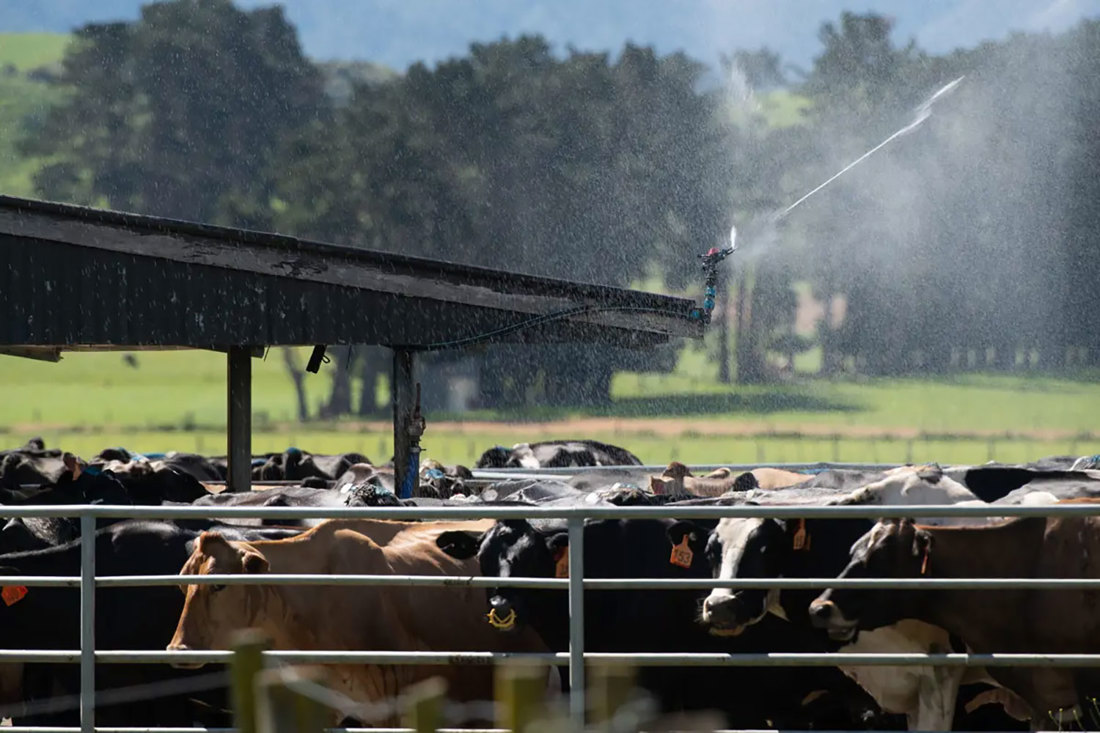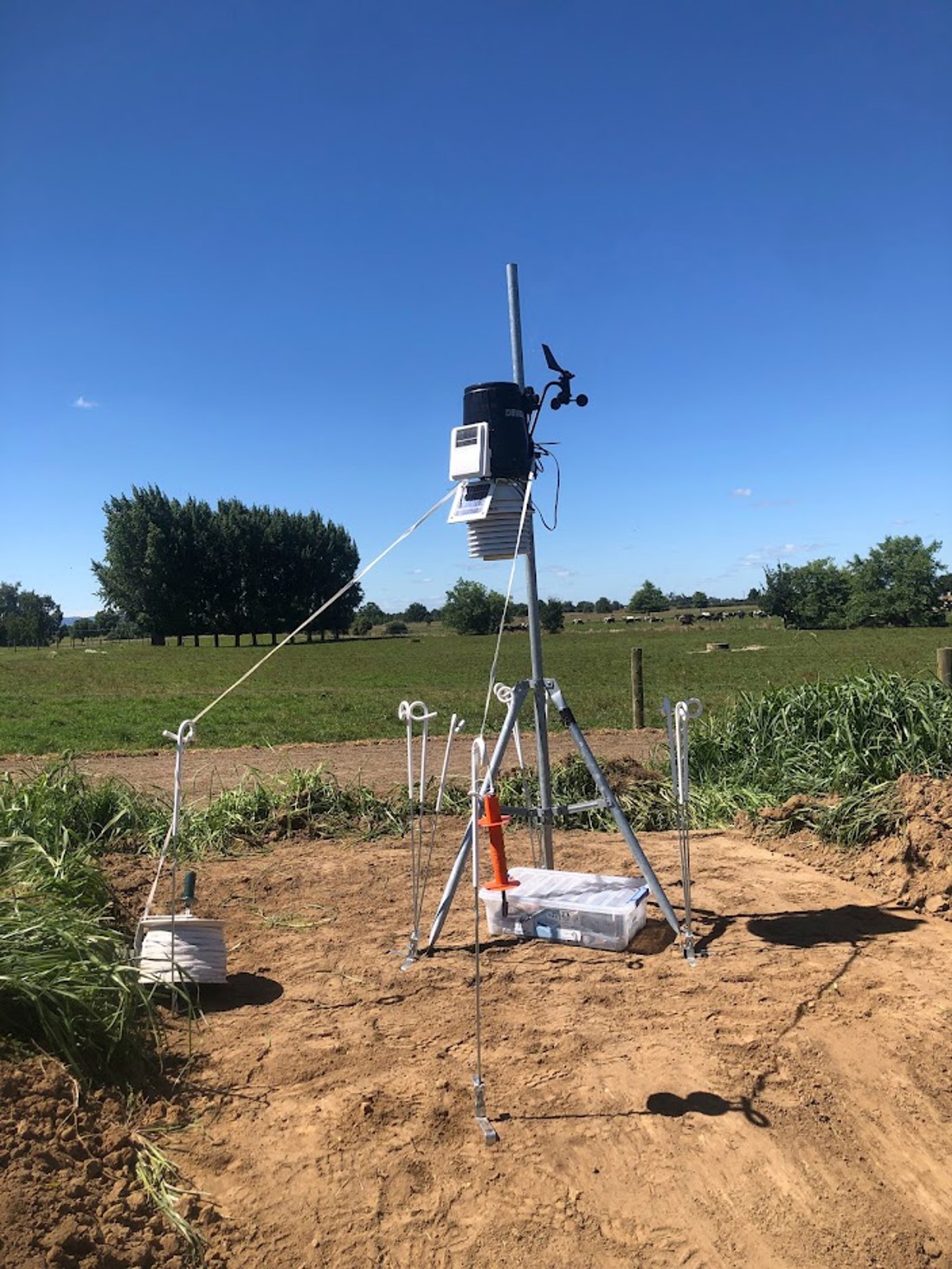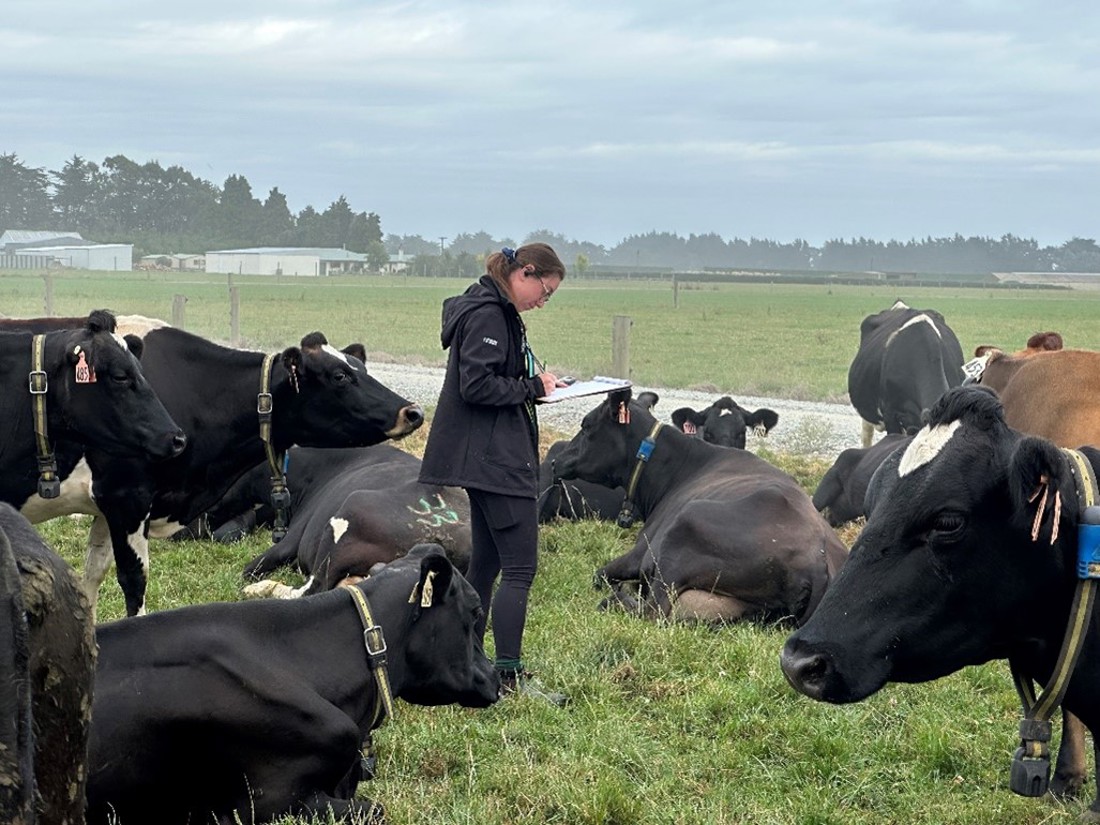Heat Stress
5 min read
DairyNZ, in partnership with AgResearch and Fonterra, is researching ways to identify when heat stress in dairy cows might occur. Most areas of New Zealand already have conditions that cause heat stress some days, and the number of days is going to increase with global warming. Better methods for predicting heat stress will help farmers manage their herds and reduce the impacts of heat stress. Read more on how the research is successfully identifying, measuring, and predicting heat stress in dairy cows.
To develop a grazing heat load index that enables forecasts or alerts of heat stress risk for dairy cattle grazing pasture in New Zealand. Commonly used indices only include ambient temperature and humidity. In New Zealand, predictions of heat stress in grazing dairy cows requires additional weather variables, including solar radiation and wind speed. The aim is to help identify and predict heat stress more accurately and have ways to reduce its impact.
Project progress: developing

Heat stress trials in the Waikato studying animal response and mitigation options.
Develop a prototype digital heat stress email and SMS alert service and test with farmers, with the aim to assist farmers with better mitigation of heat stress.
Grazing heat load index including solar radiation and wind speed published.
Heat stress data collected scaled nationwide to better understand heat stress.
Sensor technology data collected (collars and rumen bolus) to better understand heat stress.
Updated grazing heat load index for use nation-wide and including solar radiation and wind.
The physiology and behaviour of cows changes when they experience heat stress. Increased breathing rate, seeking shade and grouping are all signs that cows are trying to keep cool. When looking at a cow’s individual response to heat stress there is variability in susceptibility - that is, some cows cope better than others.
Read more on recognising the signs of heat stress in cows.
Heat stress risk is expected to increase in future as daily temperatures continue to rise and extreme hot weather events become more frequent. The ability to predict heat stress in dairy cows could help on-farm management decisions, such as timing of milking or choice of paddock, changing milking frequency, breeding choices, tree planting, and installation of portable shade structures.
Read more on management options to reduce heat stress in cows.
Until now, there have been a variety of ways to assess heat stress, including animal measures and weather conditions. Animal measures include breathing rate, panting and drooling, and weather conditions typically focussed on air temperature and humidity.
The Temperature Humidity Index (THI) is a common way to measure cattle heat load. It looks at both the temperature and humidity in the air. However, it doesn't include factors like wind or sunlight. But when cows are outside, sunlight can be a big part of how hot it feels to them.

Weather station for measuring weather variables such as temperature, humidity, wind speed and solar radiation.
Photo credit: AgResearch
DairyNZ, in partnership with AgResearch and Fonterra, recognised the need for a new New Zealand thermal heat load index suitable for grazing cattle. As a result, the grazing heat load index (GHLI) was developed, and considers air temperature, solar radiation and wind speed.
To begin with, most of the research took place in the Waikato and was then extended to collecting data from across New Zealand farms which had existing on-farm sensor technology. The goal was to refine and increase the accuracy of the index data collection from more locations and conditions, and compile data into one benchmark database.
The next step was to see how this data could be scaled and to consider different regional weather conditions. The national data collection verified that New Zealand cows experience different summer conditions and the hotter in gets the more risk there is of heat stress. This data was used to update the grazing heat load index, taking it from a Waikato index to a national index, regionally applicable index.
Heat stress will continue to become more important as the climate changes. The research project will keep refining geographical location data to understand which regions are more prone to heat stress.
The scope of the research is being widened to investigate the use of existing on-farm technology to identify indicators of heat stress before and after it occurs. The research is currently examining sensory data collected from collars and rumen bolus to understand a cows’ individual heat stress response. Technology will facilitate gathering data from larger herds without needing to manually observe cow respiration in the paddock.

Using the grazing heat load index, customised for New Zealand farming, means it is possible to predict which weather conditions create heat stress.
The results of this research will be used in the development of tools and technologies that can monitor and inform when cows are likely to experience heat stress and will support proactive management to keep your cows cool.
Kirsty a senior scientist and is part of the DairyNZ team working on developing farm systems and sector scale solutions for farmers to be competitive, responsible and locally and globally resilient. Kirsty has a PhD in ruminant nutrition and greenhouse gas emissions. She is also a sharemilker. She works with DairyNZ’s research teams on a number of projects.
Research teamNow’s the perfect time to check in, plan, and set up for a strong season. We’ve pulled together smart tips and tools to help you stay ahead all winter long.
Whether you prefer to read, listen, or download handy guides, we’ve got you covered with trusted tools to support your journey every step of the way.